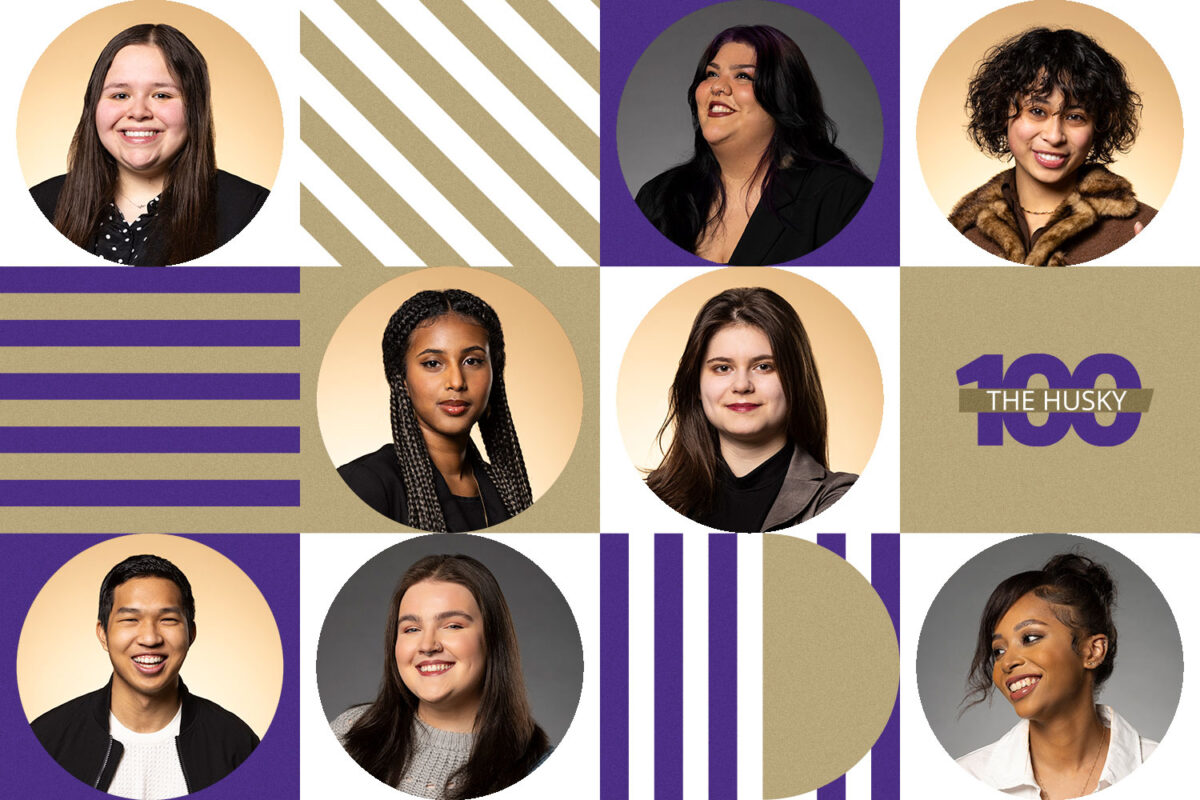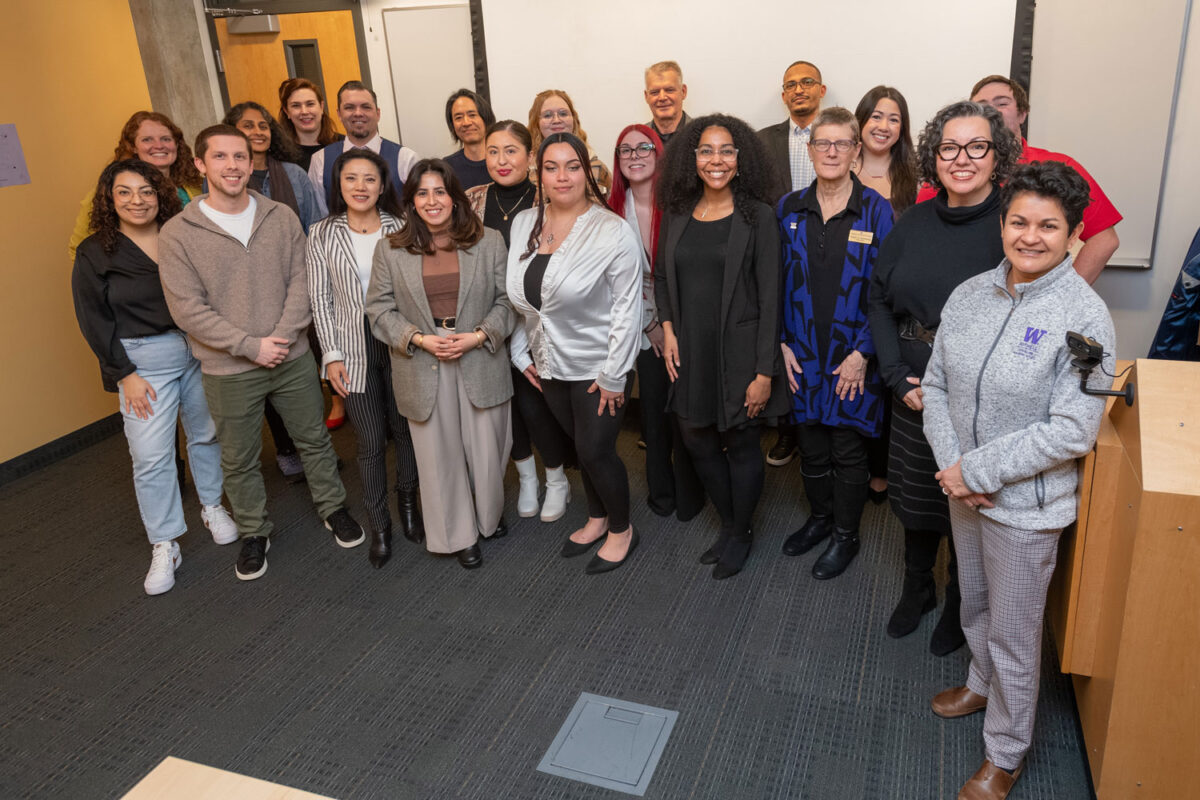In today’s technology-driven world, data is all around us. Through every tap, click and voice command we give to our devices, more data is being generated and stored than ever before. With the increase in data output, there also comes a rapidly growing sector of jobs devoted to analyzing and interpreting data. According to the U.S. Bureau of Labor Statistics, data science jobs are expected to grow 36% in the next decade.
To help prepare students for careers in this area, the University of Washington Bothell has launched a new major in Data Visualization, with its first cohort beginning this quarter.
“Because data is such a ubiquitous facet of our society right now, there’s almost an endless number of ways you can apply data visualization across academic disciplines and various industries toward an endless number of goals,” said Dr. Joseph Ferrare, associate professor in the School of Interdisciplinary Arts & Sciences. “What’s exciting about this program is that whether you have more social or environmental objectives or you want to serve businesses or technology, the possibilities are limitless.”
Reimaging an old major
While the Data Visualization major officially launched this fall, it is a reimaging of the program formerly known as Mathematical Thinking & Visualization. What first began as a simple rebrand to more accurately capture the curriculum with a new name soon became an opportunity to reconceptualize the program itself.
The program had a greater focus on math and science, but there was a disconnect between the curriculum and the actual skills students were learning and how they related to the field at large, said Dr. Caleb Trujillo, IAS assistant professor.
“We wanted to connect that curriculum more directly to this broader movement of data visualization,” Trujillo said. “And when we began conceiving this new curriculum, we realized that there were a lot of students who really wanted a liberal arts perspective on data. They wanted to understand it from a human angle and to serve communities and organizations as part of an interdisciplinary team while still being prepared for the technologically entrenched world.”
To better meet the interdisciplinary goals of students, the new major is offered as both a Bachelor of Arts and a Bachelor of Science. Similarly, Data Science and Data Analytics minors are also offered as a way to complement other majors.
“When we look at where our graduates are embarking on their careers, it’s really across the spectrum,” Ferrare said. “Whether in a more business and technology-centric position at Boeing or a job at King County that focuses more on community, we have students who are literally being plugged into every aspect of society.”
He noted that while many of the MTV students double majored in other areas, this new major offers even greater opportunities to blend art and science.
“Bringing together the creative and the scientific side isn’t something you really get to do in a lot of majors,” Ferrare said. “You don’t often get to make things beautiful and solve complex computational problems all in the same kind of project. It’s amazingly impressive to see students doing that.”
Rooted in data science
For 2022 alumnus Alec Radliff, the MTV major was appealing for how it could easily lend itself to a career in data engineering. Now, as a data analytics engineer for the tech company Arity, he puts the skills he learned in the program to use by working with data to improve transportation.
“The program aligned perfectly with my goals of getting a career in tech,” Radliff said. “My research work under Caleb Trujillo in the major was a significant talking point in all my job interviews and applications. The foundational change in statistical and analytical thinking I received from the MTV major has been an important component of my job. I process large amounts of company data, and to verify that data is accurate I have made specific visualizations to show data consistency.”
Abbie Kinaro (’22), also an alumna of the program, plans to someday work in finance and consulting as a data analyst or data scientist. For her, the MTV major was the best fit for her desired career path.
“MTV offered a nice balance between social and technical aspects, and the program’s classes, advisers and professors were all supportive,” Kinaro said. “Caleb Trujillo’s guidance was instrumental in my academic journey, and I owe much of my success to him. He wrote my graduate school recommendations. My confidence in academia today started because he believed in me even when I struggled with introductory R [programming language] assignments.”
Kinaro added that she’s also grateful to Trujillo for writing a recommendation for graduate school. She is currently pursuing a master’s degree in Data Science at Harvard University and will be graduating in May 2025.
“I know this is common advice, but it’s worth repeating: Take full advantage of the small class sizes and the close-knit campus at UW Bothell,” she said. “Your professors are invaluable resources and can offer so much insight and wisdom.
“Take full advantage of the small class sizes and the close-knit campus at UW Bothell. Your professors are invaluable resources and can offer so much insight and wisdom.”
Abbie Kinaro (Mathematical Thinking & Visualization ’22)
Unleashing the storytelling capabilities
The new curriculum in Data Visualization is particularly attractive to students looking to work in the tech sector but wanting to go beyond the task of programming.
For many, Trujillo said, jobs in computer science and software engineering can offer opportunities for social mobility, and yet the programming work these jobs require can often be an obstacle to reaching that goal.
“But there’s a different way of viewing the world that isn’t about computers,” he said. “I think that what is so useful for the student in this program is the centering of communities and people — and recognizing that every single number in your spreadsheet is from a person with a story to tell.”
What makes this new program unique, Ferrare added, is that the math and science aspects take on a supporting role, while the primary focus lies in the mastery of storytelling with data.
“This program is not just a technical degree where you learn how to code and crunch numbers, and produce data dashboards. There’s also a communication component,” Ferrare said. “How do you understand who your audience is and how their various identities will interact with what you are trying to say? And how do you then anticipate that in a way that allow you to speak broadly in a pluralistic society?
“Anyone can learn these technical skills, but to do so in a way that allows you to understand cross-cultural context and conflicts, that’s where I feel like we’re bringing something special to the community.”
Plugged into every aspect of society
Because of the interdisciplinary nature of Data Visualization, it also pairs well with a variety of other subject areas when students want to double major and/or view another area of interest through the lens of data visualization.
“For students with a socially oriented objective, these skills can be used to make a difference in the community directly, whether it’s through climate, social justice, housing, education, health care or any other area,” Ferrare said. “Basically, there’s now an abundance of data everywhere, and our students are now learning how they can tap into that data and serve as storytellers for a variety of stakeholders. I think for a lot of them, that’s really exciting.”




